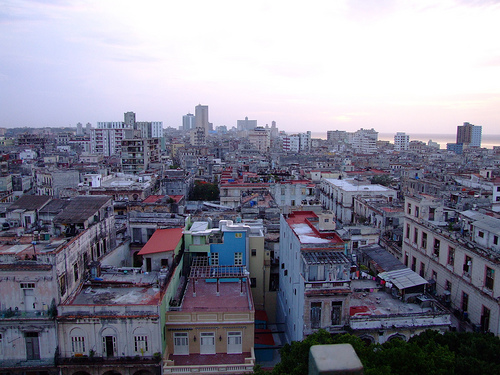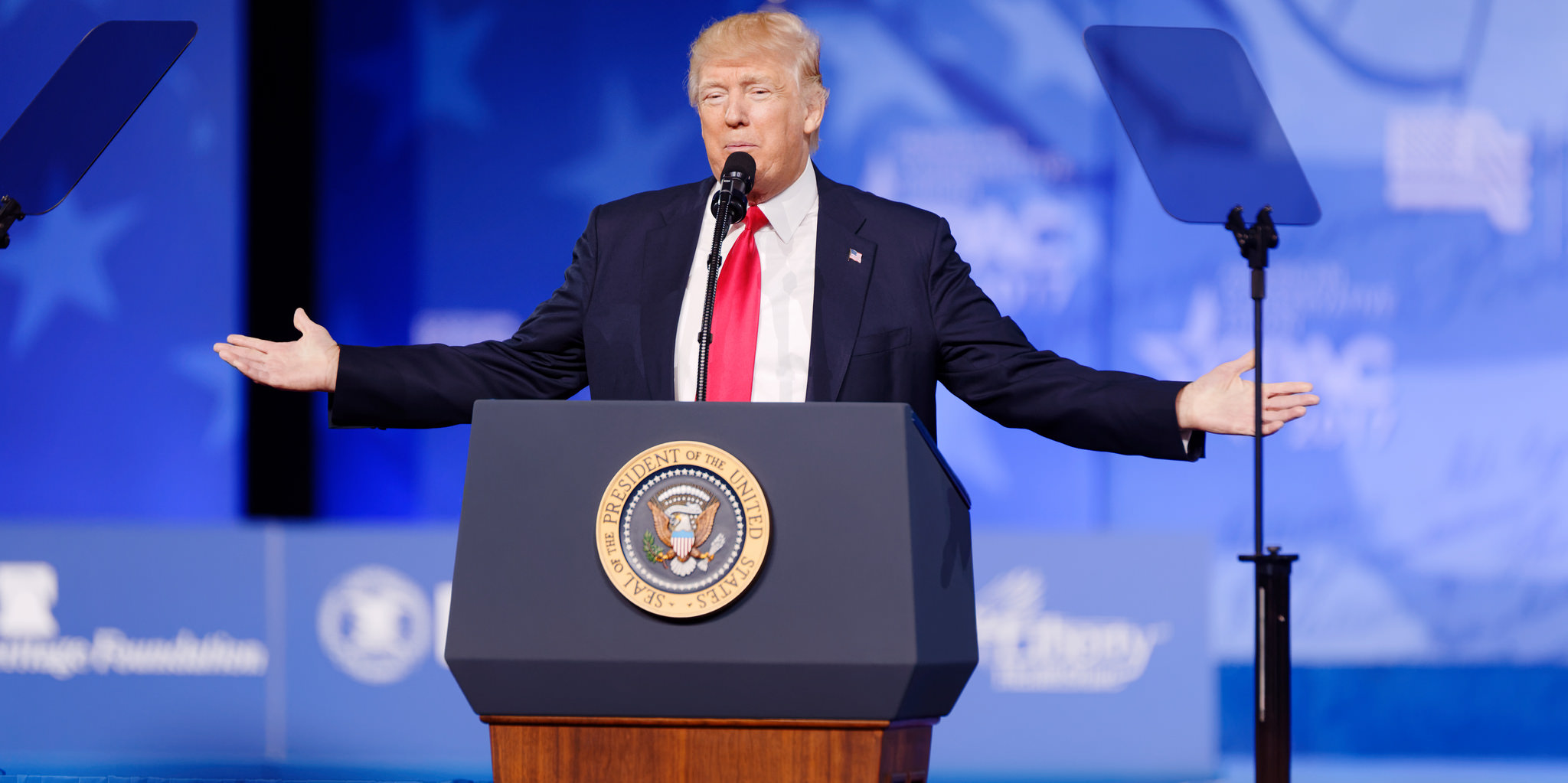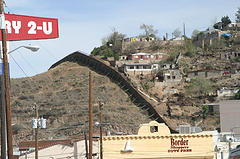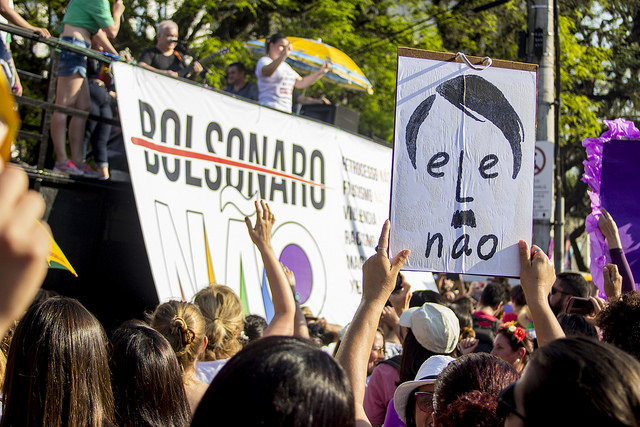
Dispatches, Mexico, North America, United States
Rebranding NAFTA; new trade deal offers more of the same for Mexico
October 30, 2018 By Leo Schwartz
NEW YORK — When President Donald Trump announced the United States-Mexico Agreement, or USMCA, on October 1, its potential impact on Mexico was unclear. The deal’s predecessor, the North American Free Trade Agreement, known as NAFTA, had reshaped Mexico. Since NAFTA was signed in 1994, food consumption in Mexico has dramatically changed, with tortillas being replaced by refined corn products and soda. As a result, the top three causes of death and disability are now diet-related diseases. During the same period, the growth of Mexico’s per capita GDP was half the rate of growth achieved by the rest of Latin America, and its poverty rate stayed almost identical. All of these dynamics can be traced to NAFTA. Upon closer examination, experts agree that the USMCA promises to be more of the same.
While President Donald Trump has long referred to NAFTA as the “worst deal ever approved” for the United States, NAFTA experts have long held that, despite Trump’s displeasure, the original deal placed American interests at the forefront, often to the detriment of Mexico. True to its name, the new agreement announced on October 1—the USMCA—will also put the United States first.
NAFTA completely restructured Mexico both economically and sociopolitically. Alyshia Gálvez, an anthropologist at the City University of New York, recently released a new book called “Eating NAFTA” detailing the unforeseen impacts of NAFTA on Mexican cultural identity. NAFTA incentivized politicians to reorganize the economy around manufacturing instead of subsistence agriculture in order to improve trade with the United States. Once the deal went into place, a flood of U.S. agricultural products decimated small-scale farming and completely altered Mexico’s food consumption behavior.
Mexicans living in rural areas had relied on a cuisine based around the milpa, an intercropped field that includes corn and other plants like squash, beans, and chilies. NAFTA had the two-fold impact of bringing in U.S. processed foods while making corn no longer profitable to grow. Throughout Mexico, consumption of traditional foods like tortillas went down as consumption of soda, snacks, and candy dramatically increased.
An immediate result of this changed dietary behavior was a sharp rise in noncommunicable diseases, with rates of diabetes increasing 41 percent and chronic kidney disease increasing 276 percent since NAFTA was signed. As Gálvez argues in her book, the unprecedented growth in diet-related disease should be considered a kind of structural violence: “a result of policy decisions and priorities.”
Mireya Loza, a professor of food studies at New York University, also studied the cultural ramifications of labor transformations under NAFTA. One of her areas of focus is the Bracero Program, which allowed Mexican laborers to enter the United States on temporary work permits between 1942 and 1964. The Bracero Program was ultimately shut down due to severe human rights violations and a lack of enforcement mechanisms.
In an interview with Latin America News Dispatch, Loza argued the Bracero Program directly influenced the H2-A visa program, which brings agricultural guest workers to the United States. These are often skilled Mexican workers exploited for temporary work. Oftentimes, this exploitation preys on the workers’ immigration status, and prevents them from exercising their rights. In January 2017, for example, six Mexican veterinarians filed a federal human rights lawsuit, alleging that they had been recruited to an Idaho dairy farm as animal scientists, but were forced to work as laborers. The farm had threatened deportation if they did not perform their assigned work.
The H2-A program skyrocketed under NAFTA, with the number of visas granted to Mexican workers increasing tenfold from 1994 to 2012. Similarly to food consumption habits, the rise in H2-A workers dramatically altered Mexican sociopolitical dynamics. According to Loza, “Families are taught to live their whole lives where they’ll see their father, mother, or brother once every couple years in between visas. This is a clear emotional impact.”
Many of these laborers are former subsistence farmers, who were pushed away from their livelihood by NAFTA. Before NAFTA was signed, the Mexican government anticipated that a half-million farmers total would be displaced from their farms. Instead, a half-million people ended up emigrating to the United States as a result of NAFTA, every single year for a decade and a half.
The USMCA is structured to continue the NAFTA trend of undermining Mexican cultural traditions and exploiting cheap labor. On the surface, provisions in the new deal are targeted at fighting poverty levels in Mexico. The new agreement sets a floor for the percent of automobile content that must be made by workers earning at least $16 an hour, with the intent of bringing up Mexican wages to be competitive with the United States and Canada (and with the hope that factories will stop moving to Mexico, where factories currently pay an average of $3.14 an hour).
Furthermore, the USMCA will force Mexico to pass strict labor laws, including protections for independent unions and enforcement mechanisms if it doesn’t comply. This is an improvement from NAFTA, which did not place an emphasis on labor regulations.
Both Gálvez and Loya are skeptical of these provisions. Gálvez said that NAFTA was premised on the idea of self-regulation, with the ideal of companies acting as honest, transparent brokers that honor the law. With Mexico’s lax level of labor inspection, though, corporations can easily flout the law or merely accept fines for violations.
Such was the case with a megafarm called Bioparques, one of Mexico’s biggest tomato exporters and a supplier for Walmart. After workers escaped from what they described as slave conditions, the Mexican attorney general’s office arrested five people, two of whom were Bioparques employees, for human trafficking. Bioparques was fined $700,000, but even then, the charge was dropped after the company satisfied health and safety requirements.
Until the signatories of the USMCA actually demonstrate that they will enforce the protections, Gálvez and Loya see no reason to believe anything will change.
As for food consumption, Melissa Fuster, a professor of health and nutrition sciences at Brooklyn College, does not believe the new deal will address the unhealthy dietary behavior created by NAFTA. Over email, she said that processed foods will still flow into Mexico, which will likely continue its shift away from small-scale farming to manufacturing as transnational companies increasingly gain influence.
While the USMCA deal promises to be more of the same, “Eating NAFTA” author Alyshia Gálvez said in an interview that for people concerned about alleviating poverty levels in Mexico, “Optimism is centered on one thing: the election of Andrés Manuel López Obrador.”
Obrador, or AMLO as he is popularly known, will become the president of Mexico in December. Just like Trump, he views NAFTA derisively, once referring to it as “the biggest pillage in history.” His motives are different, though, rooted in the belief that NAFTA undid the promise of the Mexican Revolution of ensuring an equitable distribution of wealth.
Recent signs point at AMLO working to revitalize Mexican agricultural traditions, including an initiative that would pay farmers to supervise the planting of trees to “rebuild Mexico’s social fabric and the environment.” As for the USMCA, the most he has publicly done is suggest a name change to put Mexico at the front. Due to the deep structural ramifications of NAFTA, though, reversing its impact on Mexico will take much more than a rebranding.
About Leo Schwartz
Leo Schwartz is a journalist and researcher pursuing a master’s degree in journalism and Latin American studies at NYU. His reporting has appeared in Roads & Kingdoms, Street Sheet, and Cinema Escapist, and he previously worked as a producer at The Players’ Tribune. His research interests include freedom of the press and the rise of digital media in Latin America.





